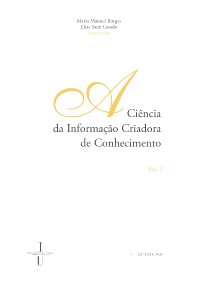Please use this identifier to cite or link to this item:
https://hdl.handle.net/10316.2/31908| DC Field | Value | Language |
|---|---|---|
| dc.contributor.author | Alonso Arévalo, Julio | |
| dc.contributor.author | Gallego Lorenzo, Josefa | |
| dc.date.accessioned | 2014-06-27T10:51:36Z | |
| dc.date.accessioned | 2020-09-20T12:14:03Z | - |
| dc.date.available | 2014-06-27T10:51:36Z | |
| dc.date.available | 2020-09-20T12:14:03Z | - |
| dc.date.issued | 2009 | - |
| dc.identifier.isbn | 978-989-26-0319-3 (PDF) | |
| dc.identifier.uri | https://hdl.handle.net/10316.2/31908 | - |
| dc.description.abstract | The new context of learning and research determined by the European Higher Education Area, jointly with the new model of relationship between the library and its users that has been raising for some years with the information technologies, establishes training on information as one of the fundamental strategic lines in the future of academic library services, as recognized by REBIUN’s II Strategic Plan 2007-2010. This implies the involvement of the library in the development of support materials, and an effort by the information services staff to be adequately trained. We must guide the education and training in aspects of teaching, usability, and knowledge of various tools, especially those based on free software as ExeLearning and CamStudio. Some experiments undertaken in this area are presented. | eng |
| dc.description.abstract | El nuevo contexto de aprendizaje e investigación que determina el Espacio Europeo de Enseñanza Superior, junto con un nuevo modelo de relación entre biblioteca-usuario que viene planteándose desde hace ya algunos años con las tecnologías de información, consagra la formación en información como una de las líneas estratégicas básicas en el futuro de los servicios bibliotecarios universitarios, y así lo reconoce el II Plan Estratégico REBIUN 2007-2010. Esto conlleva la implicación de la biblioteca en la elaboración de materiales de apoyo, y un esfuerzo del personal de los servicios de información para capacitarse adecuadamente. Hay que orientar la formación inicial y continuada en aspectos relativos a didáctica, usabilidad, y conocimiento de diversas herramientas, especialmente aquellas basadas en software libre como ExeLearning y CamStudio. Se presentan algunas experiencias iniciadas en este ámbito. | por |
| dc.language.iso | spa | - |
| dc.publisher | Imprensa da Universidade de Coimbra | por |
| dc.relation.ispartof | http://hdl.handle.net/10316.2/2749 | por |
| dc.rights | open access | - |
| dc.title | Desarrollo de tutoriales en Bibliotecas Universitarias en el contexto del aprendizaje y la investigación: adaptación al Espacio Europeo de Enseñanza Superior | por |
| dc.type | bookPart | por |
| uc.publication.firstPage | 301 | - |
| uc.publication.lastPage | 317 | - |
| uc.publication.location | Coimbra | por |
| dc.identifier.doi | 10.14195/978-989-26-0319-3_25 | - |
| uc.publication.digCollection | PB | - |
| uc.publication.digCollection | AA | por |
| uc.publication.orderno | 25 | - |
| uc.publication.area | Artes e Humanidades | por |
| uc.publication.bookTitle | A ciência da informação criadora do conhecimento Vol. I | - |
| uc.publication.manifest | https://dl.uc.pt/json/iiif/10316.2/31908/223746/manifest?manifest=/json/iiif/10316.2/31908/223746/manifest | - |
| uc.publication.thumbnail | https://dl.uc.pt/retrieve/11372349 | - |
| uc.publication.parentItemId | 52759 | - |
| uc.itemId | 72893 | - |
| uc.object.level | item | - |
| uc.thumbnail.uri | https://dl.uc.pt/iiif-imgsrv/11372313/dl!3!12!88!98!128898078663282884601562231094804397276 | - |
| item.fulltext | With Fulltext | - |
| item.grantfulltext | open | - |
| Appears in Collections: | A ciência da informação criadora do conhecimento Vol. I | |
Files in This Item:
| File | Description | Size | Format | |
|---|---|---|---|---|
| 25-_a_ci_ncia_da_informa__o_criadora_de_conhecimento_vol_i.pdf | 1.05 MB | Adobe PDF |  |
Items in DSpace are protected by copyright, with all rights reserved, unless otherwise indicated.
